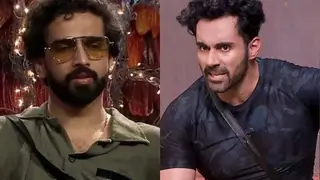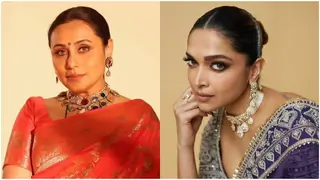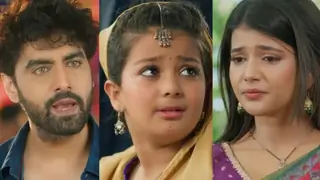Anatomy of a song
Bhagwant Sagoo
Posted online: Friday, September05, 2003 at 0000 hours IST
"Kya yehi jaawani hai...' from Chaand shows just how incredibly gifted composer-duo Husnlal-Bhagatram were. One can marvel at the meticulous detail and craftsmanship that went into creating this melody full of mystique, sex-appeal and innocence"
"Husnlal-Bhagatram had achieved a great deal within the limited resources at their behest. Their marquee was their gifted approach to sentiment. They allowed themselves to play to the masses and connected by giving what the masses craved"
indi film music buffs have an ocean of melodies to dip into when they wish to wallow in nostalgia. A passing listen to any 30s, 40s or early 50s classic is enough to transport the listener to an era when life seemed a lot simpler, slower and in "black and white." Even for those not old enough to remember the 30s and early 40s, but who have developed a taste for its pioneering faculties, feel obligated to pay due homage by regular visits to its treasure trove.
Not that historical records in India have ever been kept to any decent standard. Accessing dated material can be an uphill struggle. Private collectors have, in the main, provided us with enough material to still marvel at the industry with which early music directors like Saraswati Devi, Timir Baran, Pankaj Mullick, Anil Biswas, Khemchand Prakash, Master Mohd. and R.C. Boral to name just a few, managed to integrate their music into the new medium of cinema, thereby managing to touch millions with their work rather than a select few.
Yet when we listen to say K.L. Saigal or indeed contemporaries like K.C. Dey, or Pankaj Mullick, or Kanan Devi, or Kamla Jharia, or Amirbai Karnataki, what strikes us most about the song we are listening to? We are attracted to a particular song for a myriad of reasons and for each reason there is in itself a multitude of emotions that have a significance and relationship to our own personal being. This incredibly complex phenomenon is perhaps best analysed by dissecting the base units of a specific song.
Let us take the example of: 'Kya...yehi jaawani hai...' from the film Chaand in the year 1944. The singer was Zeenat Begum and music was by Husnlal-Bhagatram, with lyrics by Qamar Jalalabadi. This particular song is chosen as it gives a lifeline to an era many have only heard or read about. The moment I heard this song, I was overwhelmed by the meticulous detail and craftsmanship that went into creating a melody full of mystique, sex appeal and innocence. The play on words by Zeenat Begum and the use of a certain seductive style to inject eroticism into the piece leaves you wondering just how incredibly gifted the main protagonists were.
The brothers Husnlal and Bhagatram by 1944 made their debut film score with Chaand. The film starred Begum Para, Prem Adeeb, Sitara and Sapru, and other playback singers for the film included Roshanara Begum and Ghulam Mustafa Durrani. Bhagatram Batish was the first of the brothers to have entered the world of music direction and was active even earlier than elder brother Pt. Amarnath, who enjoyed tremendous respect in the industry. I was surprised to learn through highly informed Hindi film music enthusiasts on the RMIM internet chat page that Bhagatram had earlier had an association with Madhavlal Master, with the duo calling themselves Madhavlal-Bhagatram.
The association of Bhagatram with younger brother Husnlal gave them extra width and range, and the two siblings found that they tuned with each other better than any third party. They also developed their own unique style and became noted for their highly emotive rona dona tragedy-laden moments which became a trademark of not only Husnlal-Bhagatram but that of the era in which they were proficient.
Music director Khayyam became ecstatic when I remarked to him that one of my favourite songs was Mohd. Rafi's 'Woh marne se nahin dartey, jinhen sabak mohabbat waala seekha...' from the Shammi Kapoor and Suraiya-starrer Shama Parwana. "They are my gurus," Khayyam remarked, "They took me under their wing when I came to Bombay from Punjab, they fed me, looked after me, nurtured me..." He became quite emotional as I had touched on a part of his life he was very fond of.
Khayyam is well justified in his adoration of this extraordinary musical duo. They brought their own Punjabiyat to Bombay and infused it within their melodies. Anyone who needs reminding of their worth could do worse than listen to Badi Bahen and Pyar Ki Jeet, two of our landmark film scores.
With the onset of the late 40s and early 50s, Husnlal-Bhagatram found real success with Lata Mangeshkar and Mohammed Rafi. Husnlal indeed gave Lata several years of musical training and the following forlorn love-struck songs became a byword for Rafi: 'Ek dil ke tukde hazaar hue, Koi yahaan giraa, koi waahan gira...' (Pyar Ki Jeet); 'Mohabbat ke dhoke mein, koi na aaye, koi na aaye, woh ek din haasaye to sau din rulaye...' (Jal Tarang) and 'Duniya hai barbaad dil ki...' (Meena Baazar).
In 1944, Husnlal-Bhagatram were relative newcomers, but that, it seemed didn't matter. Full of confidence that appears to be the preserve of the young, they laid down a score that was totally different to what audiences had been weaned on. Zeenat Begum was equal to the task of singing lyrics penned by Qamar Jalalabadi. She was already a favourite singer with the duo's elder brother Pt. Amarnath and their Paapi (1943) number 'Pat rakho Girdhari, mori pat rakho Giridhari...' penned by Aziz Kashmiri is indicative of the wealth of talent invested in scores of that milieu.
Zeenat Begum also sang some incredibly worthy numbers for other music directors including 'Apna na ho sake to...' from Bhaiijan (1945), which had music by Shyam Sunder and lyrics by Padataau Lucknavi; 'Jhuulana dalaa de more...' from Pagdandi (1947) which had music by Khurshid Anwar; 'Tum jug jug jiyo jahan mein...' from Pagdandi (1947) which had music by Pt. Amarnath, who also composed the film's background music.
So what makes 'Kya...yehi jaawani hai...' take your breath away. The opening musical introduction is a combination of Oriental and American Blues stamped with the Husnlal-Bhagatram simplicity to composition style. The introductory passage is a reworking of the opening line and strikes in the listener an image of ill-fitting trousers, oil slicked hair, perhaps a toe sticking out of the right foot sock. This may give you the impression that we are dealing with a couple of country bumpkins who didn't know their business. Far from it. Husnlal-Bhagatram, if anything, managed to connect with the everyday cinegoer and music lover with a composition that is relevant to their lifestyle and life situation. The addition of a latent sexuality only adds to the excitement the song creates. The entrance of Zeenat Begum adds yet another dimension to the whole. The moment she utters 'Kya...' you know that this is going to be a singer who is going to play with your inward sexual frustrations. She labours on the word 'Kya...' in such a permissively seductive way that had it not been for the year 1944, and perhaps a societal innocence not aware of such methods of vocal delivery, it may well have been a contender to be banned.
'Kya...yehi jaawani hai,
Har din nikhra hua,
Har raat suhani hai,
Kya...yehi jaawani hai...'
Qamar Jalalabadi had also written other magical lyrics for Husnlal-Bhagatram like 'Woh paas rahe ya door rahe...' sung by Suraiya in Badi Bwhen; 'Aaja tujhe afsana judai...' sung by Noorjehan with Pt. Amarnath in Mirza Sahiban; and 'Aapne chhin liya dil...' sung by Rafi and Meena Mangeshkar in Meena Bazaar. With 'Kya...yehi jaawani hai...' Qamar Jalalabadi is economical in his use of prose. This is not to insinuate that it is any poorer in expressiveness. On the contrary, to minimise the use of prose and yet convey meaning the way he has managed it, takes a great amount of literary capacity. Qamar Jalalabadi possessed that in abundance.
One other song in Chaand also merits a mention. 'Do dilon ko yeh duniya, Milne hi nahin deti...' has been widely credited to Karan Dewan's wife Manju as a singer. Others attribute this beautifully sung number to Zeenat Begum. However, the latest money is on Roshanara Begum who also sang 'Aaii aaii museebat, ai musafir bhaag chalo...' It is conjectured that Roshanara Begum playbacked for the child actor Balakram in Chaand. The jury may be out on this one and it is one more example of the atrocious way records were kept (or not kept) in the early days of film music composition. One may think that a listening to the song should reveal the identity of the singer. However, Zeenat Begum was a singer who changed her voice texture and renditional style within a song, never mind for different songs. Therefore it can be quite an onerous task in tagging the song to an individual.
By the mid-50s, Husnlal-Bhagatram's career had effectively come to an end. B-grade films like Trolley Driver and Tarzan And The Circus don't set the heart aflutter unless you happen to be an avid film music buff. They were replaced by their underlings, Shankar-Jaikishan, who like some unchecked forest fire, consumed everything in their path. Times had changed, tastes had altered and the first musical brother team did not have the musical muscle to stay ahead of the game. From all accounts, Husnlal-Bhagatram were simple people who were responsible for their own premature end than anyone else.
When we see dated photos of the pair, we get the impression of young men who had achieved a great deal within the limited resources at their behest. They did not have the support of any benefactor and lived on their wits' end producing music that has stood the test of time. Their marquee was their gifted approach to sentiment. They allowed themselves to play to the masses and connected by giving what the masses craved. If they had survived for a little longer we may have had a lot more of the like of 'Woh meri taraf yun chale aa rahe hain...' sung by Kishore Kumar in Kafila (1952), or indeed a song they were born to compose for a singer who should have been their ideal playback specialist, viz. Mukesh crooning 'Kismat bigdi duniya badli...' in Afsaana (1951).
The next time you listen to that song that offers the whole gamut of emotions, ask yourself a few questions about its origins. It is likely to throw up as many questions as answers, but ultimately, its dissection will give you a lot more to enjoy the next time you wallow in nostalgia.
Edited by soulsoup - 19 years ago



























